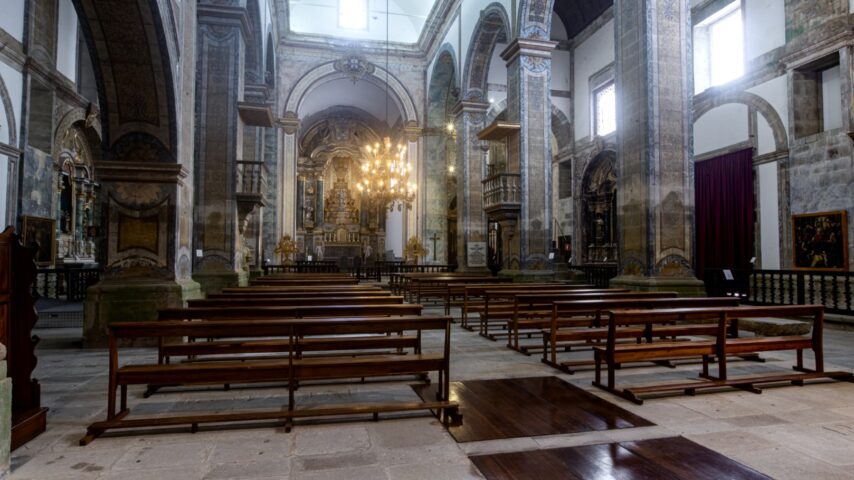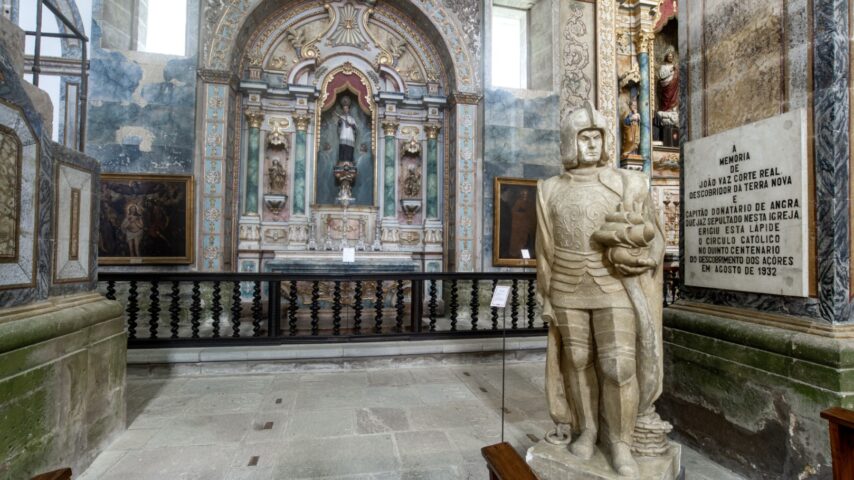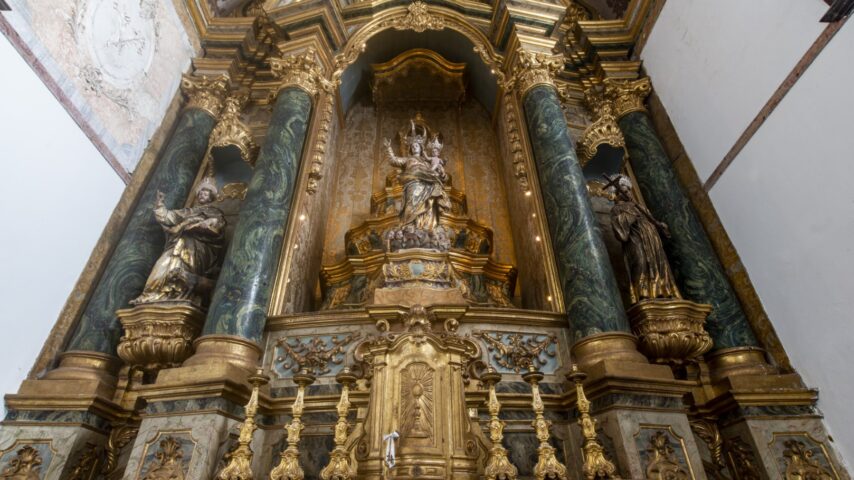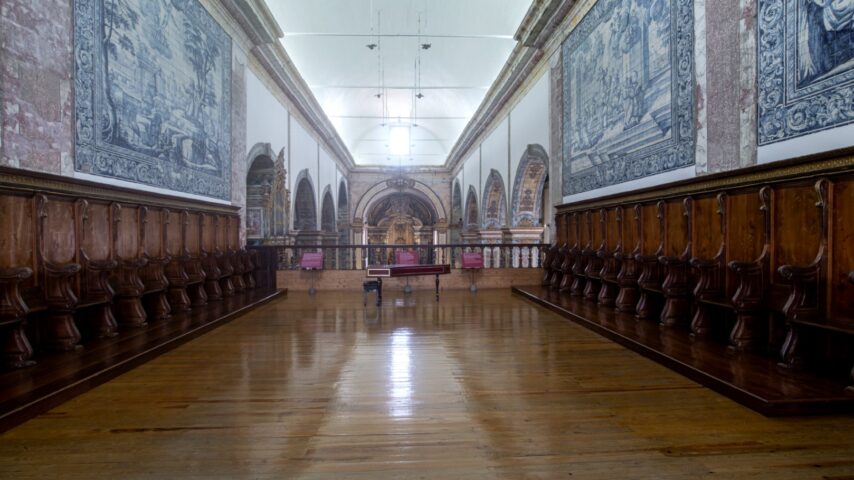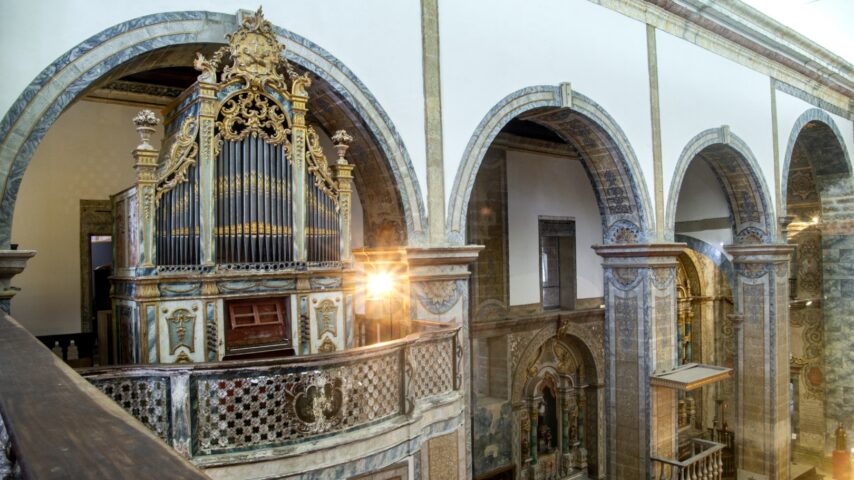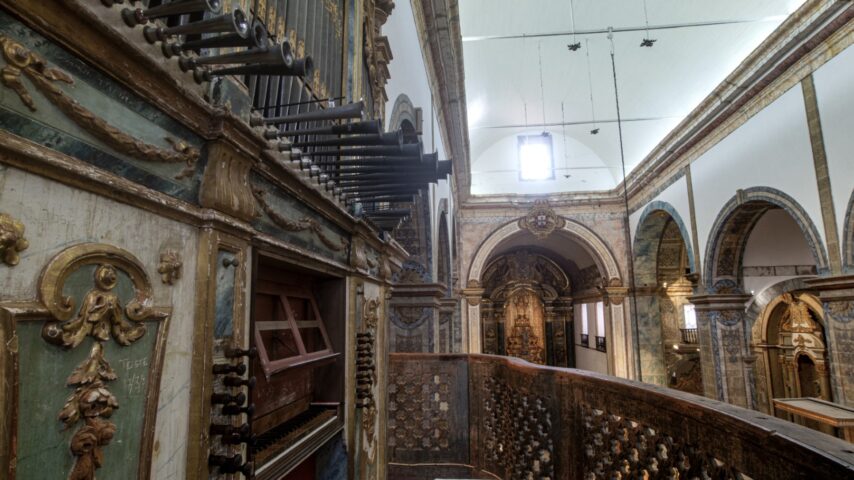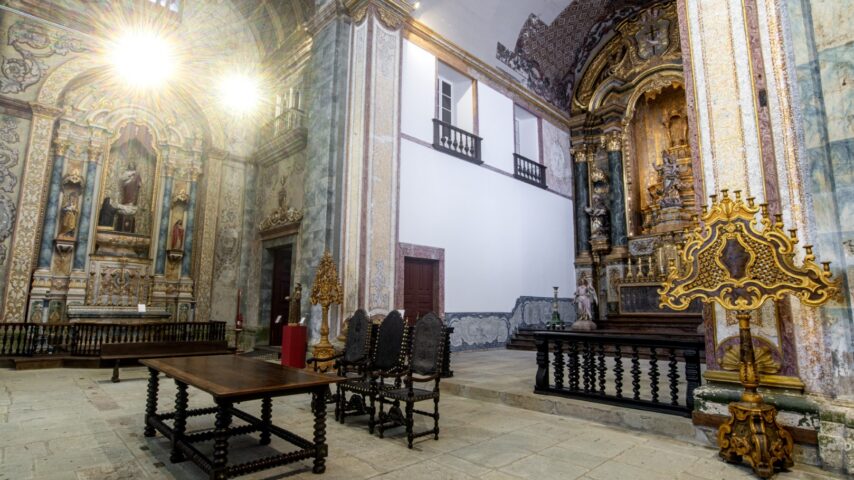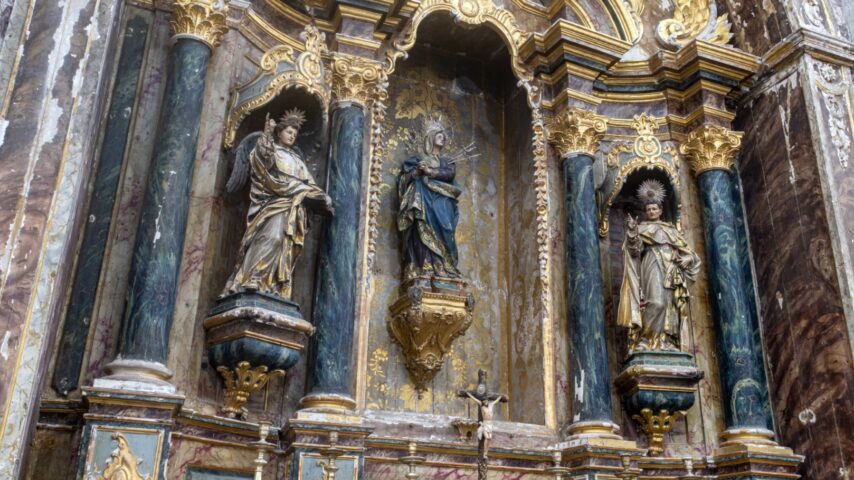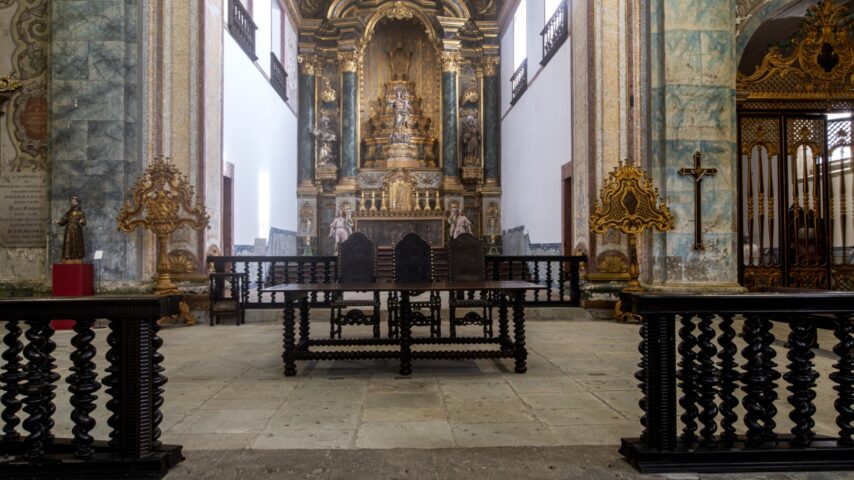San Francisco Building
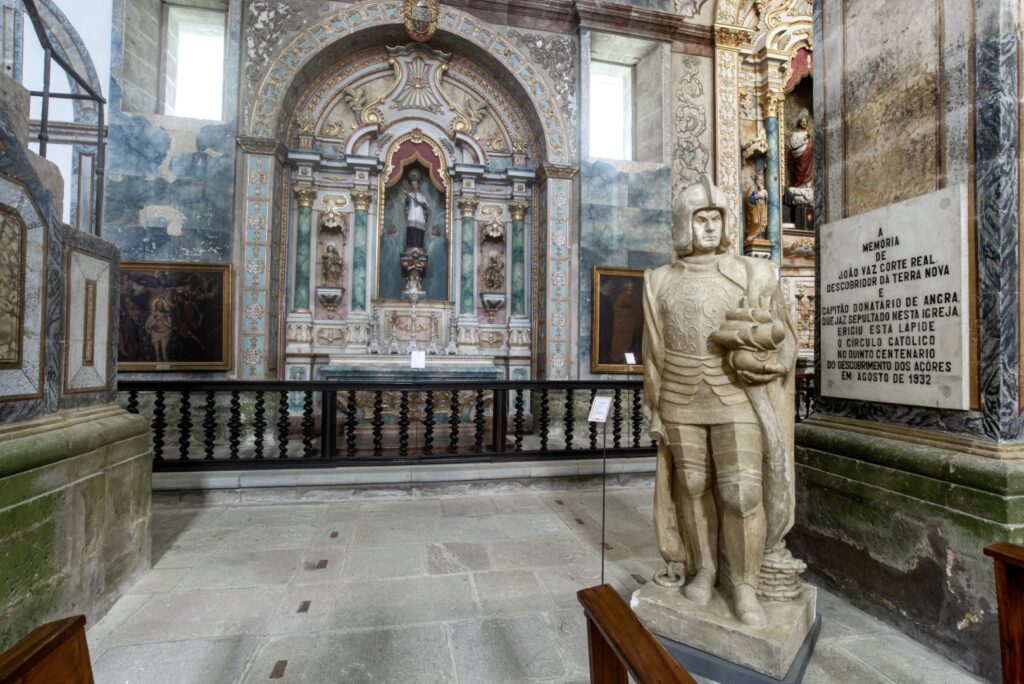
The Church of Nossa Senhora da Guia, attached to the São Francisco building, is an example of what George Kubler referred to as the “plain style,” a Portuguese architectural style marked by austerity of form.
It stands on roughly the same site as a small chapel built in the 15th century, dedicated to the same patron saint, by Captain Afonso Gonçalves de Antona Baldaia, one of the island’s first settlers. A lieutenant of Álvaro Martins Homem, Baldaia accompanied him when he took possession of the Captaincy of Praia in 1474, donating the house to the first Franciscan friars who arrived here, and the chapel became a conventual church.
J.H. Van Linschoten’s letter already documents a building that was remodeled and expanded in the 16th century. Some archaeological remains found in the foundations and other structures of the current building suggest Manueline characteristics.
Built between 1666 and 1672, the existing temple has three naves: the central one, which ends at the chancel; the one on the Gospel side, which ends at the access door to the ante-chamber; and the one on the Epistle side, which leads to the chapel currently known as the Third Order, which was originally the “grocery store” established by André Gomes in 1522.
In the sacristy, which was opened to the public in 2018 after restoration work carried out by technicians from the Regional Directorate for Culture’s Material and Intangible Heritage and Archaeology Division, highlights include, in addition to a gilded and polychrome coffered ceiling centered with the coat of arms of Saint Francis, a magnificent rosewood chest, attributed to Master Manoel de Almeyda (c. 1745), featuring a crucifix with an ivory Christ of Indo-Portuguese origin and four relics. Also noteworthy is a fountain, dating from 1722, with high relief work in stone, flanked by Solomonic columns.
Above the galilee and part of the central nave is the high choir, the walls of which are covered with a rich paneling of tiles from the first half of the 18th century. The composition of the designs consists of elements of Franciscan hagiography made in a Lisbon workshop.
Next to the choir is an organ, dated 1788 and number 22, the oldest in the Azores, by António Xavier Machado Cerveira, one of Portugal’s greatest master organ builders.
Gustaaf van Manen Residence
It is worth mentioning that the Angra do Heroísmo Museum is hosting an artistic residency by Dutch organist Gustaaf van Manen, as part of the Domingos com Música (Sundays with Music) concert cycle.
This collaboration offers visitors the unique opportunity to experience the magnificent sound of this historic organ.
